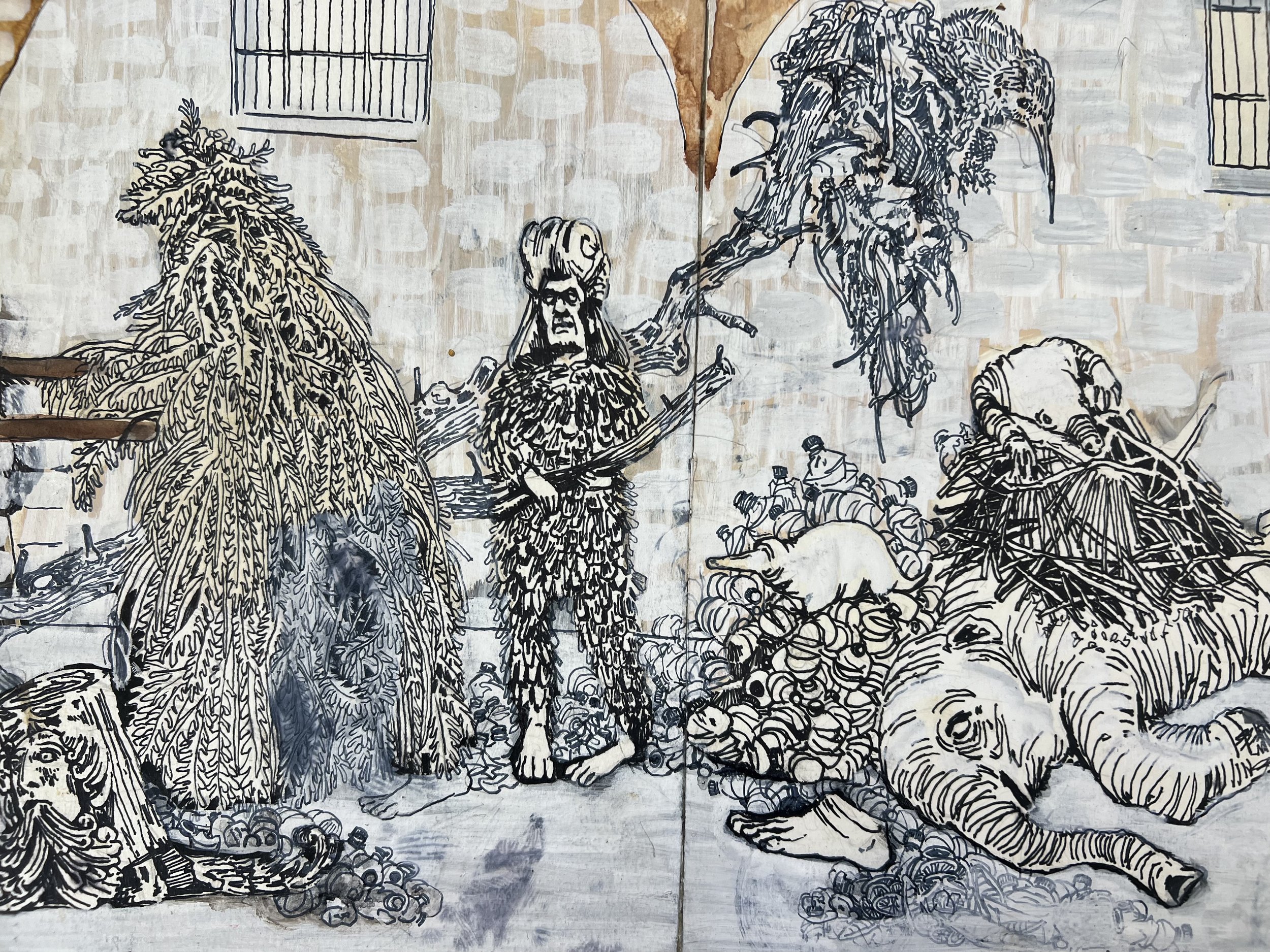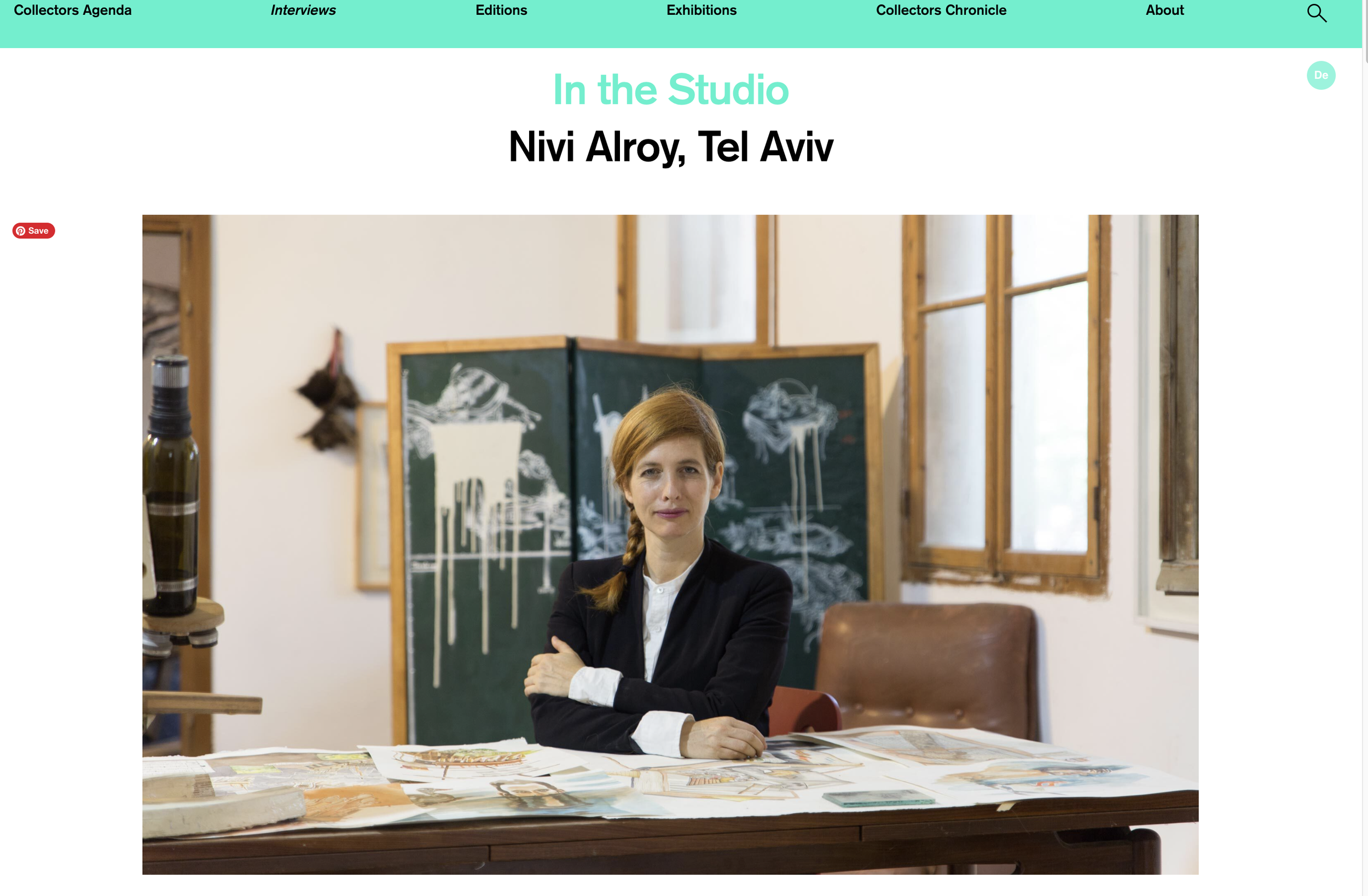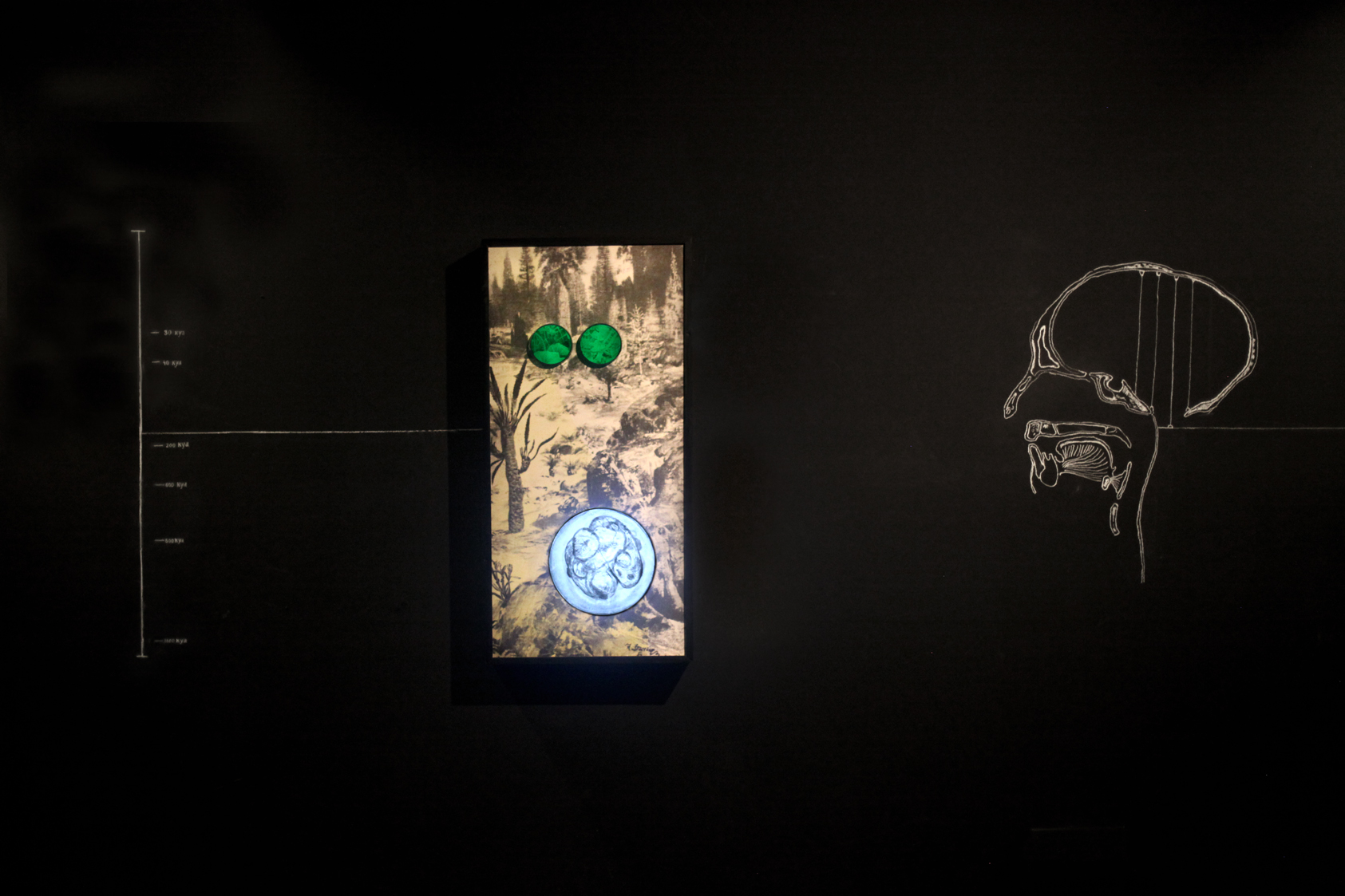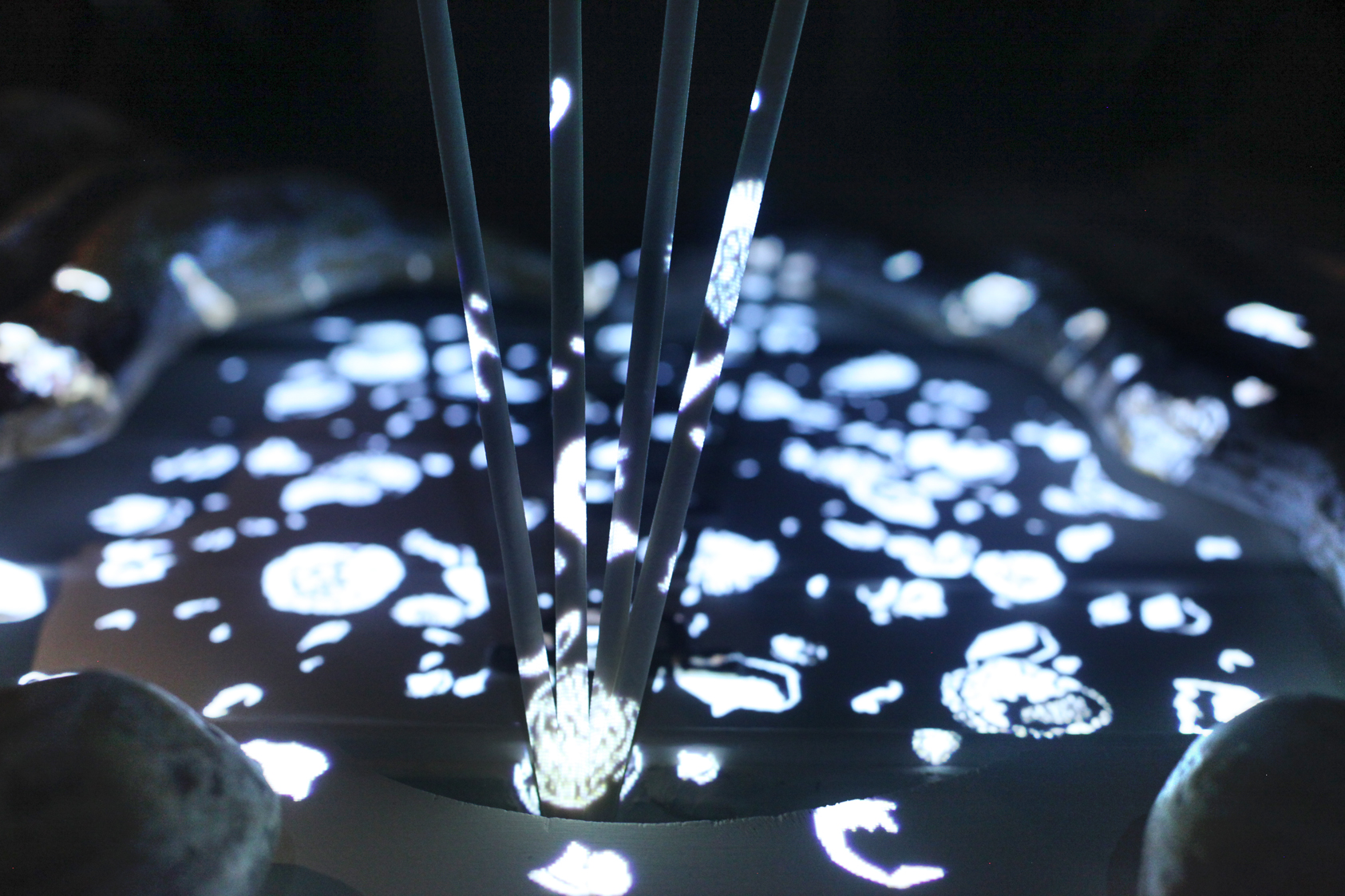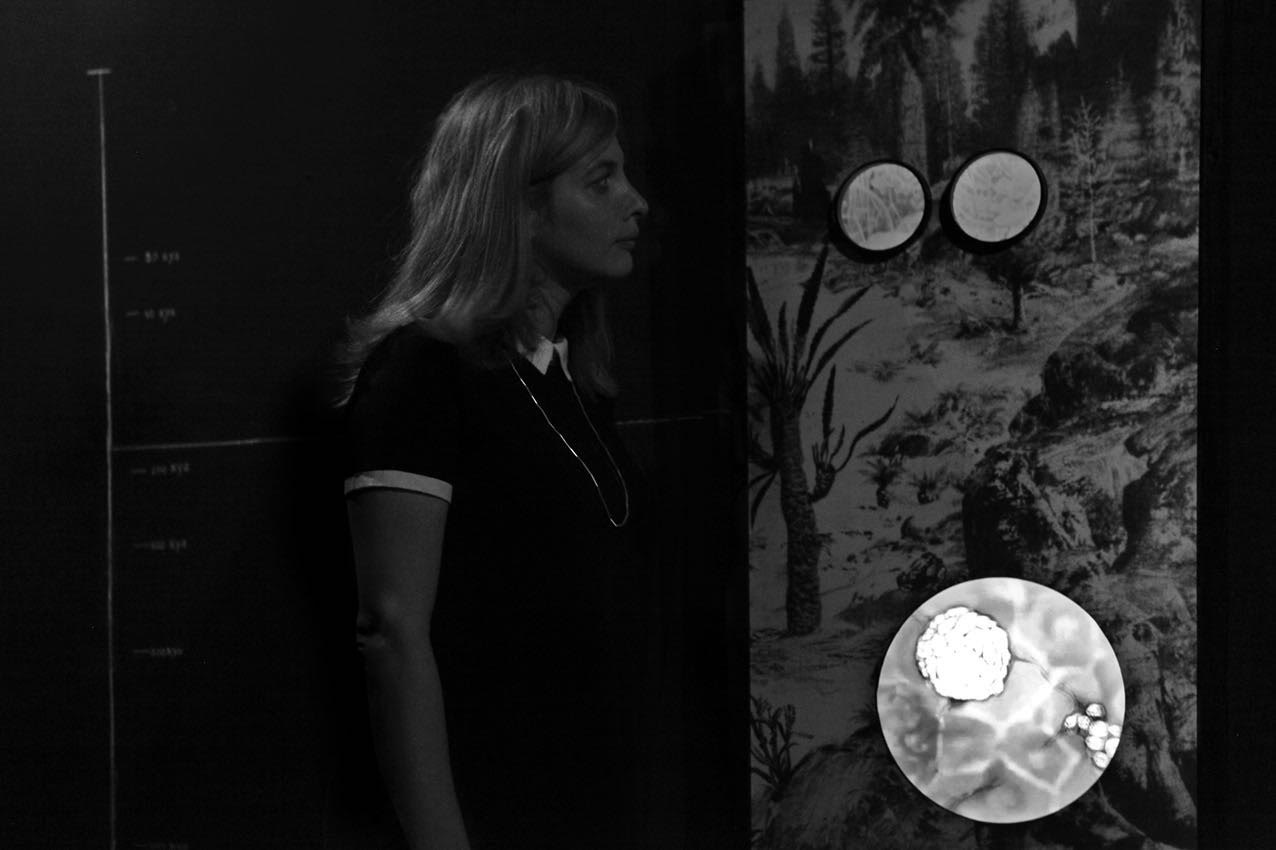An Interview in Collectors agenda magazine
https://www.collectorsagenda.com/en/in-the-studio/nivi-alroyA interview with me at Collectors Agenda Magazine
Currently showing
An Atlas for falling stares, a site-specific installation, The Wilfrid Museum of Asian and contemporary art, as part of the show, ‘When things fall apart’
Curator:Shor Meller Yamaguchi
Currently showing
After the flood is back with a new site- specific mural,
Group Exhibition with Uri Katzensteinart the Ramat Gan Museum of Art
Curator: Ronit Eden
Mariana Trench is now on view at the Herzliya Museum!
Three years of research and hard work had led to the extensive solo show at the large hall of the Herzliya museum. the show consists of three separate halls, a large scale site- specific installation, an animation and a radio play in collaboration with Moran Schoub at the video hall and a drawing show.
NIVI ALROY: MARIANA TRENCH
Curator: Aya Lurie
After the Great Flood of 2150, a figure recalling the American cartographer and researcher Marie Tharp sits in her study, hunched over the drawing table, and gazes at her long scrolls, on which she has drawn maps and diagrams of past periods in human art and culture. This is the last remaining spot on earth, which has been almost completely wiped out by glaciers that melted during the “Sixth Extinction.”
The solo exhibition of the multidisciplinary artist Nivi Alroy begins a moment after that extinction. It consists of several site-specific installations that depict seductive and frightening visions of a future world re-emerging in the wake of global ecological destruction. Alroy’s work is based on actual scientific research in the fields of biology, oceanography, and ecology (which she became deeply acquainted with during an art residency program at the Hebrew University of Jerusalem), coupled with experiences and memories of her family. Although Alroy relies on real-world materials, she transforms them to create a fictional and poetic work in which scientific facts and predictions serve only as a starting point. The destruction of life on earth will occur, according to scientific predictions, as a result of ongoing and complex processes: atmospheric warming; flooding of the land by the seas and oceans due to melting glaciers; damage to natural resources and their aggressive exploitation; and irrevocable disruption of the ecological balance that has nourished and preserved a host of processes and organisms on earth for thousands of years – including ourselves, the human race. By mapping the past (that is, our present), Alroy’s sculptural installations portray the world after the calamity as an evolutionary hybrid made up of the remains of a destroyed civilization.
At the western entrance to the large space is a raft-shaped structure, a hybrid of artificial and organic forms: debris from the seafloor, parts of furniture, and a cluster of plastic residues. All of these have joined together into a freakish ecosystem, which is unlikely to manage to deliver its inhabitants to safety. At the center of the space is a wooden home that has been flooded. Surrounding it are innumerable buckets of concrete, that have seemingly proliferated, unchecked, of their own accord. On the roof of the wooden structure rises a high ladder that leads to nowhere, and stops at the ceiling of the hall, as a potential, but hopeless, escape route.
Visitors to the exhibition are invited to cross the building through a depressed route that traverses the building. This is a range of peaks whose shape resembles the Mariana Trench – a chain of underwater precipices that surround the deepest known depression on the Earth’s surface. A long map hangs from the drawing table of the researcher Marie Tharp, and a submarine is reminiscent of the famous Alvin submarine, which has set out since the early 1960s to collect data and findings at the bottom of the Atlantic Ocean. At the end of the hall hangs another long map pertaining to Tharp’s research – including the movement of the tectonic plates due to the expansion of the ocean floor, and a zebra formation that describes the pattern of switching of the Earth’s magnetic poles.
The exhibition space will serve as an arena for performances, meetings, and collaborations with artists and researchers from the fields of dance, music and science. The upper gallery presents an audiovisual project that accompanies this exhibition, The Mariana Trench – Flooding, a radio play and screening, the product of Alroy’s collaboration with the artist and author Moran Shoub.
The exhibition is generously supported by Outset Contemporary Art Fund; Israel Lottery Council for Culture and the Arts; Friends of the Museum, Yael and Zohar Gilon; and B.I.T Real Estate Enterprise & Development Ltd.
A new world is under construction. My new alter ego is a lady called Zebra. She is the last woman in the world after the sixth extinction. More details are coming soon.
The show High Pitch is now on at The Tel Aviv Museum
A collaboration with Nadav Reboh, Curators: Tal Lanir and Hagit Werner
My new collaboration with musician Nadav Reboh is an animated sculptural installation with a musical score. We went on a journey to the birth of the human voice, based on a joint research by two researchers from the Hebrew University in Jerusalem, Prof. Eran Meshorer and Prof. Liran Carmel. Here are some images from the process towards the show.
Vocal Folds, back view, A mixed media sculpture with a video projection photo: Mia Gurevich
Vocal Folds, an animated projection on a mixed media aculpture.
Reprogramming (The collection of Ann and Ari Rosenblatt) Photo: Mia Gurevich
A process sketch for High Pitch a drawing/animation work
Research for a new exciting project for a show at the Tel Aviv Museum
These days, I'm working on a challenging project, a multi- media show opening at The Tel Aviv Museum in May. It is a collaboration with the musician Nadav Reboe (Naduve) who will write a musical score for the show. It is curated by Hagit Werner and Tal Lanir.
The work is inspired by an article by Prof. Eran Meshorer and Prof. Liran Carmel. Both researchers recently compared the genome of the Neanderthal, Danisovan and Homo-Sapiens, by sequencing epigenome that was drawn from two teeth of a Danisovan man. This research had led them to incredible discoveries regarding the human voice. The show will combine drawings, animation, installation and music. Here is some of the research towards the upcoming show.
A frame from the storyboard
Process shots from working of our performance at the Weizmann Institue.
The Revenge of Gaya- The Weizmann institute
A wooden custom-made closet, animated projection, chalk on wood, a wooden ladder, originally created for a performance at the International Board of Directors gala event, The Weizmann Institute in collaboration with Prof. Vardi 2016
Director of The event: Abigail Green, animation editing: Tom Kouris
Earlier this month, I took part in a special experience. I presented a drawing/animation piece in collaboration with Prof. Vardi, my husband during the international board essambly gala event. Assaf lectured about the connection between organisms in the ocean and formation of clouds. During the original performance
Working on the performance during rehearsals.
Flood, 2016. A collaboration with Ella Rothschild
drawings and sketches for 'Flood'- A collaboration with Ella Rothschild
Flood is a collaboration with the outstanding dancer and choreographer Ella Rothschild. It is an interdisciplinary piece, combining dance, animation, a sculptural environment and drawings. A key inspiration for the piece are the Pacific and Atlantic Garbage Patches, two vast areas in the oceans that are characterized by exceptionally high relative concentrations of plastics, chemical sludge and other debris that have been trapped by the currents of the Atlantic and Pacific gyre.
you can see more images here: http://ellarothschild.com/works/flood/
Here are only some of the drawings and sketches I did for the show:
A visit to Prof. Dani Mandler's lab, a curious, mysterious collaboration
Prof. Mandler had kindly invited me to his lab about two week ago. Prof. Mandelr's lab studies chemistry, physical electrochemistry, surface science, forensic chemistry and sol-gel technology. After two long conversations, I feel that a very fruitful collaboration may arise from this fascinating interaction. The confusing, exciting aspect to our interaction, is the fact that his research field is such a new terrain for me. Trying to even envision how one can translate what cannot be seen is a challenge. For example, how would acceleration or ease in of processes such as corrosion or decay in the nano scale translated to my visual world and artistic questions. Embarking on unexpected thought journeys is the essence of this unique residency program. I'm glad and fascinated by this collaboration, no matter what the future holds. I can only write that our conversations had already sparked several possible paths that move me and stir my imagination.
Prof. Mandler at his office
In a conversation with Prof. Eilon vaadia
Prof. Eilon Vaadia, the director of the Edmond and Lily Safra Center for Brain Sciences visited my studio earlier this week. He is a charming, brilliant brain scientist. After a long, compelling conversation, I was left with so many questions and idea threads. How do I remember how to hold a cup? How exactly do bees navigate? How do paradigm shifts connect to my upside down people? Can we 'remember' the future? can machines develop human intelligence? I can't wait to visit him at his lab and continue our conversation. Here are some fragments from our interaction.
Paradigm shifts.
A note from our conversation
An overview of Amit's lab
A new, fascinating Encounter at The University- Amit Zoran's lab
When I entered Zoran's lab, I stumbled into a mysterious, intriguing world where craft and computer science are intertwined. Half of the lab is a high tech kitchen and the other half, a workshop investigating traditional crafts and materials in 21st century equipment.
After a few thought provoking conversations, I can only hope that at least one of our collaboration ideas will take shape and surprise us. Check out his inventions and research at http://amitz.co/
KEN MATSUZAKI's oven
A note with some doodles and ideas fragments from our conversation.
Reprogramming at The Artist House in Jerusalem
Reprogramming- a one year collaboration with Prof. Eran Meshorer, is now on view as part of the show Between The Synapses- artists collaborating with THE ELSEC BRAIN INSTITUTE,
Curator: Michal Mor
An inspiring conversation with Prof. Liran Carmel
A little while ago, I had the pleasure to meet a fascinating researcher who studies bioinformatics of molecular evolution and genetics, Prof. Liran Carmel. I was drawn to his research through an article in Science, written with Prof. Eran Meshorer, dealing with reconstructing the epigenome of the Neanderthal and the Denisovan man. They compared this ancient epigenome with that of modern humans, and identified genes whose activity had been muted in comparison to our own species. my fascination with de extinction had led me to meet him, but he kindly introduced so many aspects of his research that may lead to exciting artistic exploration, that I am now back to the drawing board, to envision possible work paths. I hope that this meeting will continue and result in a new body of work.
A new beginning. In a conversation with Prof. Liran Carmel,
A diagram Of Napoleon and his Army during the war in Russia. Liran showed me some wonderful books dealing with visualization of time, geography and genetic research.
Prof. Carmel showed me a wonderful survey of translating data to a visual image by Edward Tufte.
A new Vimeo page with my animations
This is a sample of animations that were a part of various installations and some background
Sub Cell is an animation loop, projected from the gut of a cement and wax sculpture. It concerns the primordial soup theory; the where and the life began on earth. The motion followed the motion of division and cloning pace of cells inside a petri dish. the drawings are of architectural parts and drawn with a quill pen.
An animation created for the solo show, The Red Queen in 2013. It was projected over a sculpture of a wasps nest, hung over deserted lab bench. Here is the story behind the installation:
A once abandoned laboratory is now inhabited by a wasp’s nest.
Drawing from the “Red Queen’s hypothesis,” (Van Valen,
1973) principle of constant transformation as a crucial tool in evolutionary development, Nivi Alroy
creates a symbiotic environment, where one life form is simultaneously dependent but also
threatens the other. Animated organisms are bursting out of an old scientific laboratory, touched
by time, bringing to mind the collision point between artificially induced life and natural habitat. (Shown in a 90 degree angle)
An animation loop by Nivi Alroy, Originally created for the solo show Food Chain, curated by Tami Katz Freiman,
as part of the Ahuvi most promising artist award show at the Fresh Paint art fair. The elements were hand drawn with a quill pen, and the animation followed the motion of a drop of water, shot in slow motion.
The movie was projected as a part of a video- installation in a dark hallway and could only be seen through a peeping hole. Along the years, It was also projected over a bridge, a bath tub, a five story building and more.
(Here it is show in a 90 degree angle)
Movies portraying stem cell development →
During my search for an animation source, that would reflect stem cell development, the motion of cell differentiation,came across some incredible footage.
The first two movies were sent to me from Prof. Eran Meshorer:
Here are some clips that depict the development of a five days embryo to a Blactocist.
A more advanced sketch for the collaboration with Prof. Eran Meshorer
A watercolors on paper sketch, imaging the ready made I found in the campus, with those peculiar black eyes and another window for an animation loop.
Read MoreAn early sketch for a collaboration with Prof. Eran Meshorer
This is an early sketch for a collaboration with prof. Eran Meshorer, who studies reprogramming of neuronal brain cells. This sketch was drawn after he told me about John Gurdon, the father of stem cell research and cloning. Although the work had completely changed ever since, I thought that it would still be interesting to expose the early thought process.
Read More
